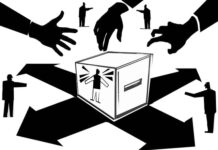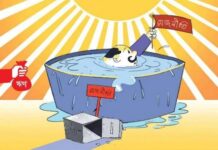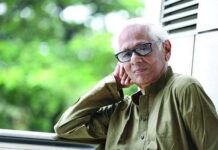Major (retd) Ali Haider Ziauddin, a valiant freedom fighter, passed away recently. In 1971, he was a Second Lieutenant in the Pakistan army. He was on leave in his hometown Pirojpur when the Liberation War began. The young artillery officer joined the Mukti Bahini and fought bravely against the Pakistani forces in Sector 9. He was appointed Sub-Sector Commander of the Sundarbans, Pirojpur and Bagerhat areas.
When I was reading the online reports informing of his expiry, I observed unhappily that a few newspapers wrote that in 1971 he was the Commanding Officer of First East Bengal Regiment. It was also stated that First East Bengal Regiment was a unit operating in Sector 9. I also noticed that the full name of this freedom fighter was not mentioned in the obituaries published in online and print versions of our newspapers.
As a Second Lieutenant, AH Ziauddin could not be the Commanding Officer of First East Bengal Regiment. In 1971, this military unit operated in various parts of Sylhet. But AH Ziauddin took part in battle in the Sundarbans and Pirojpur. The Commanding Officer of First East Bengal from August to December 1971 was then Major M Ziauddin, Bir Uttam. Unlike AH Ziauddin, M Ziauddin BU defected from the Pakistan army in August 1971 and fled to India along with then Majors Abul Manzoor and Abu Taher and then Captain Patwari. Soon they arrived in Bangladesh and joined the Liberation War. M Ziauddin is still alive. It is very disappointing that a few of our newspapers mistook AH Ziauddin for M Ziauddin only because their names are similar. And it was a regrettable mistake to write that First Bengal Regiment belonged to Sector 9. Sector 9 did not have regular military units. Various guerrilla groups comprised of the army and police members and civilians constituted this Sector. The factual errors in the newspapers revealed the journalists’ lack of knowledge about freedom fighters as well as the history of our Liberation War.
I was displeased to see such inaccuracies in the news stories but I was not surprised. For quite some time now, I have been observing an abysmal lack of knowledge, especially among young people, about our freedom fighters. In my classes at Dhaka University and in my interactions with young people outside the classroom, I often tend to discuss freedom fighters and various events of our Liberation War. To my great disappointment, most of the time I found that their knowledge about our freedom fighters was scanty. After noticing the serious mistakes in the obituaries, I became curious to know if my current students were aware of the correct information about a freedom fighter like Ali Haider Ziauddin. In one of my classes of the undergraduate-level course “Political Processes and Institutions,” I asked the students about him. Only three students out of nearly 60 could say that he was a Sub-Sector Commander of Sector 9. The rest of the students had never heard of him, and they did not even read his obituaries in the newspapers.
For me, seeing these young people demonstrate ignorance about our freedom fighters has been a regular phenomenon. My current students’ unfamiliarity with Major Ziauddin only shows that the unwillingness of our young people to know about the heroes of 1971 persists. In this situation, would it be absurd to surmise that the incorrect information in the newspaper obituaries is indicative of a general apathy towards our freedom fighters and Liberation War history?
In a consumerist culture, emphasis is placed on entertainers rather than real heroes who rebelled against unjust circumstances to bring social transformation. Heroic and noble deeds are of little value in a society where life is ruled by the pursuit of material benefits. Real heroes distinguished by their rare accomplishments hardly receive media attention in a consumer society. On the contrary, modern mass media tend to bring certain individuals—who are able to carry off a performance with panache—in the limelight. Their alluring appeal and glamorous performances are celebrated in today’s mass media world because such attributes serve to intensify consumer lust, thereby aiding the market.
Media theorist Daniel J Boorstin draws a distinction between a hero and a celebrity. For him, the hero created himself, whereas the celebrity is constructed by the media. As he puts it, “the hero is made by folklore, sacred texts, and history books, but the celebrity is the creature of gossip, of public opinion, of magazines, newspapers, and the ephemeral images of movie and television screen. The celebrity is born in the daily papers and never loses the mark of his fleeting origin.”
In a society marked by its enormous craving for capitalistic values, people of glorious deeds have been constantly overshadowed by mass-produced pseudo-heroes who are regarded by Boorstin as “marketable human models.” Marxist writer Christopher Caudwell says that instead of revering heroes, the consumer society tends to worship “charlatans” who “have power over men but not over matter.” For the Marxists, acts of heroes have a social significance. Our freedom fighters rose up against an oppressive regime. By risking their lives they fought for a new social order which would bring freedom from colonial domination. Is it enough to publish newspaper supplements and to televise special programmes depicting their heroic tales of courage and sacrifice only on March 26 and December 16? How can we expect our young people to gain substantial knowledge about Ziauddin and his military comrades, Shafi Imam Rumi and his fellow guerrillas and rural freedom fighters, if media exposure is constantly given to those individuals possessing glamour and market appeal? In contemporary society, do the families, teachers, media and political parties try to make young people aware of the necessity to attain sufficient knowledge about our War of Liberation? Do we make people understand that contemporary electronic heroes should not be confused with the real heroes of our country?
Our society will be deprived of true exemplars if mere entertainers are continually projected as public figures by the mass media. Various issues attract our attention these days, but the worrying signs of societal apathy towards our own history do not seem to perturb us. Our society is already feeling the reverberations of some of our young people having turned into religious fanatics. Can we then say that we have been successful in inspiring the new generation to embrace the spirit of 1971 which is antithetical to religious intolerance, political oppression and social discrimination?
If the heroes of 1971 are relegated to oblivion in the country they had liberated, that would be a tremendous shame. Apathy and indifference to our freedom fighters will make our society devoid of historical consciousness which may have far-reaching consequences for Bangladesh in the years to come.
Source: The Daily Star









